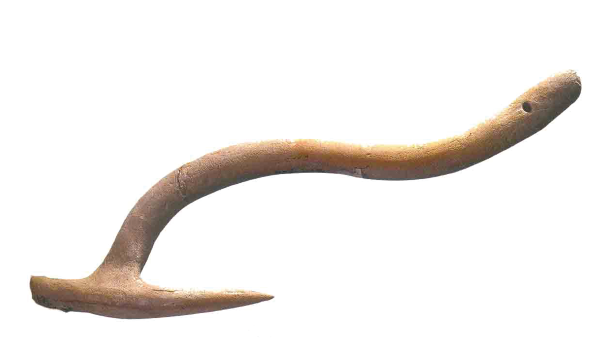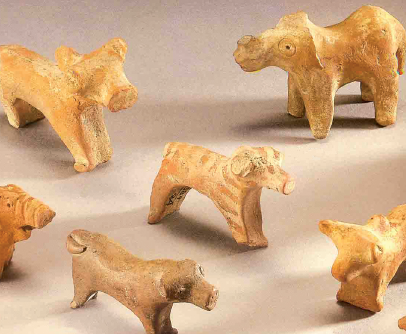Chapter 4 - In the Earliest Cities
Question 1: How do archaeologists know that cloth was used in the Harappan civilization?Answer:
• According to archaeologists cotton was probably grown in Mehrgarh about 7,000 years ago.
• Actual pieces of cloth were found attached to the lid of a silver vase and some copper objects at Mohenjodaro.
• Archaeologists have also found spindle whorls, made of terracotta and faience. These were used to spin thread.
• We also have indirect evidence to show how cloth was decorated. For example, a stone statue of an important man found at Mohenjodaro shows him wearing an embroidered garment.
Question 2: Match the columns:


Question 3: Why were metals, writing, the wheel and the plough important for the Harappans?
Answer:
• Metals: The Harappan made copper tools. They also made ornaments of gold and silver.
• Writing: Writing was very important for the Harappans. There were scribes, people who knew how to write. Scribes helped prepare the seals and perhaps wrote on other materials that have not survived.
• Wheel: The Harappans used the wheel in carts. They also used the wheel in spinning. The wheel was used by potters to make or shape pots and other things.
• Plough: Plough was used to prepare the land for farming by the Harappans.
Question 4: Make a list of all the terracotta toys shown in the lesson. Which do you think children would have enjoyed playing with the most?
Answer: The terracotta toys shown in the lesson are:



Children would have preferred terracotta toys and toy carts instead of plough.
Question 5: Make a list of what the Harappans ate, and put a tick mark against the things you eat today.
Answer: Food items eaten by Harappans are Wheat, Barley, Pulses, Peas, Rice, Sesame, Linseed, Mustard, Fruits etc.
Food items eaten by us are Wheat, Pulses, Peas, Rice, Linseed, Fruits.
Question 6: Do you think that the life of farmers and herders who supplied food to the Harappan cities was different from that of the farmers and herders you read about in chapter 3? Give reasons for your answer.
Answer: Yes, the life of farmers and herders who supplied food to the Harappan cities was different from that of the farmers and herders as
• Harappan farmers and herders used a wooden tool called plough which was used for turning the soil and planting seeds. The earlier farmers and herder used mortars and pestle for grinding grain. Their tools were also made of bone.
• Harappan farmers and herders used irrigation for better produce while the earlier ones did not.
• The Harappan farmers stored food in well-built granaries and not in clay pots, baskets, etc.
• Harappan farmers lived on the outskirts of cities, whereas there were no settled cities in the time of the farmers and herders.
Question 7: Describe three important buildings in your city or village. Are they located in a special part of the settlement (e.g. the centre)? What are the activities that take place in these buildings?
Answer: The following are three important buildings in city:
• Community Hall
• School Building
• Hospital
The following activities take place in these buildings respectively:
• Community Hall: Marriage Parties or Public Functions.
• School Building: In this building, education is provided to boys and girls of our village or city.
• Hospital: Here ill people or patients come and consult doctors, compounders or nurses as per their diseases or requirements.
Question 8: Are there any old buildings in your locality? Find out how old they are and who looks after them.
Answer: Yes, there are some old buildings in our locality. These buildings are looked after by a government department. The name of this department is the Archaeological Survey of India.
No comments:
Post a Comment